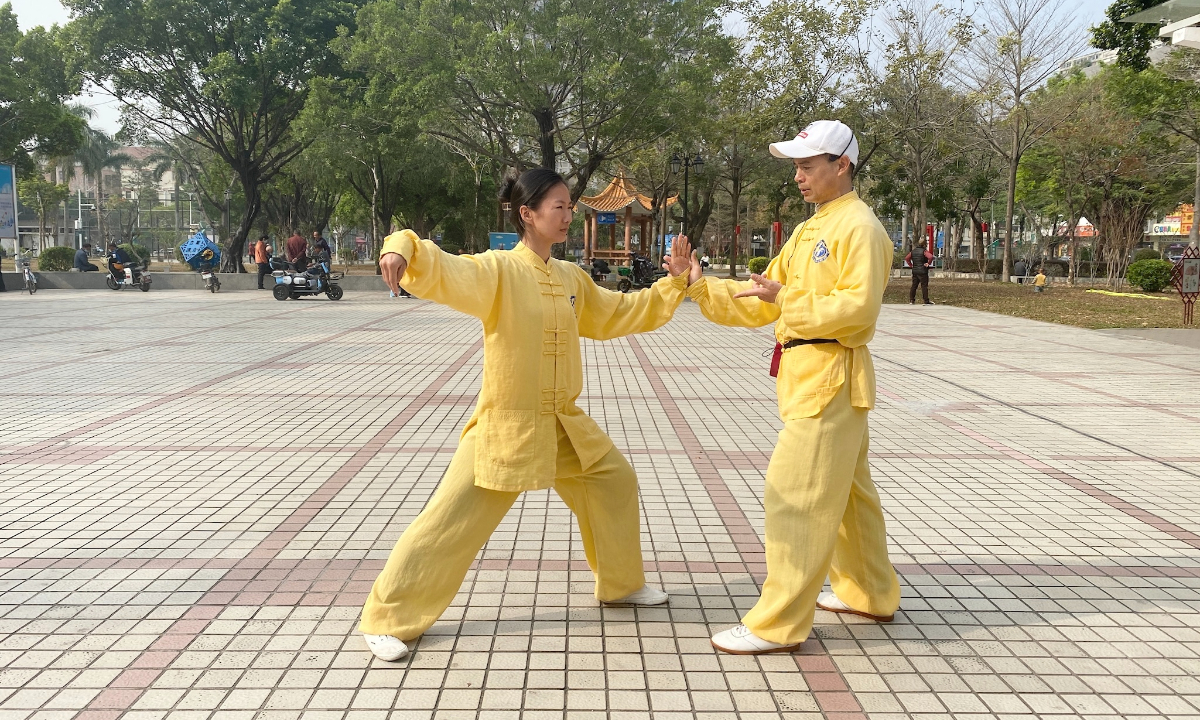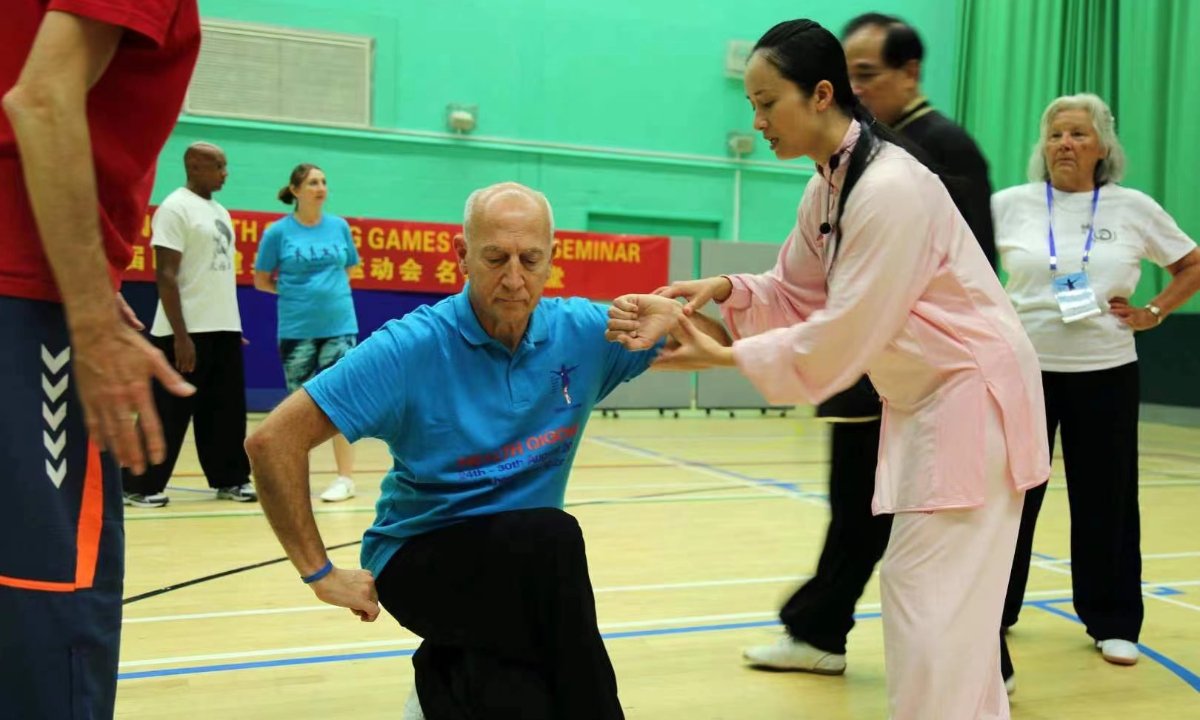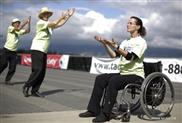ARTS / CULTURE & LEISURE
Healing Hearts
Urban youths seek peace of mind through traditional Chinese exercise

Lin Xiaoxue (left) practices tai chi with master Huang Houda in a park in Shenzhen, South China's Guangdong Province. Photo:Courtesy of Lin Xiaoxue
Partially because they are getting bored of working out in the gym everyday and partly out of the simple desire to try something completely different, young Chinese are experimenting with a new way to stay healthy: Doing traditional Chinese exercises such as Tai chi and Baduanjin after work.
The trend first started shortly after the COVID-19 outbreak began. Experts recommended patients from makeshift hospitals do low-intensity exercises featuring slow movements and tai chi and qigong styles Baduanjin and Wuqinxi were clearly among the best choices.
This start gradually became a trend and then an entire phenomenon. One of the main reasons for the popularity of this "Chinese exercise movement" is that the pandemic has made people pay more attention to their health. They have also found that taking part in these exercise sessions, which are often performed with a group, can help alleviate the loneliness and anxiety that come from living in the big city.
The growing popularity of yangsheng, or traditional Chinese health orientated sports and exercises, among youngsters hasn't come as a surprise to medical experts.
Traditional health-orientated exercises such as Baduanjin, Wuqinxi and tai chi enjoy many merits and advantages that particularly suit young people, said Wuqinxi world champion Lai Jianhui, who is also an associate professor in traditional health-orientated sports at the Shanghai University of Sport.
"They are beginner-friendly for those who lack physical exercise and suffer pressure and anxiety from work," Lai told the Global Times. She explained that traditional Chinese exercises, like Baduanjin, require practicers to take slow and even breaths while doing its slow, continuous moves, which help restore people's energy and give them physical and mental pleasure.
Combating stereotypes
The hashtags and videos related to yangsheng have gained up to millions of views on Chinese short-video platforms such as Douyin and Kuaishou, where young users actively share their experiences and feelings about these sports in the comment sections.
Among the many people making videos, one young influencer has stood out due to her double identity as a tai chi practitioner and a visual designer.
Lin Xiaoxue, a 32-year-old visual artist who has worked in the industry for over seven years, told the Global Times that she has been practicing tai chi for eight years now.
Due to poor health, which only let her do low-intensity exercises, Lin turned her attention to this slow-motion exercise routine.
"Plus I'm not a fan of exercising indoors," Lin added.
Having lived in Vietnam for half a year almost 10 years ago, she was surprised to find that tai chi had become deeply rooted in the foreign land.
"Every time I went to the temple, I always saw a bunch of local Vietnamese teaching foreigners tai chi," recalled Lin.
After moving back to Shenzhen in South China's Guangdong Province, Lin joined a tai chi group led by Huang Houda, a 58-year-old former engineer who is now an experienced tai chi master. She exercised with the group every morning at 6 am before changing into work clothes and heading off to the office.
Lin explained that tai chi is similar to yoga.
"It's all about meditation to reach peace of mind." "It helps our internal organs run smoothly. When practicing tai chi, the priority is to adjust your breath, which helps your lungs, the stomach, and more importantly inner circulation, which is the essence of Chinese exercise," she added.
Lin added that she records her training sessions every day and posts the videos online because she wants more young people to realize that a tai chi girl can be in the fashion industry and verse versa.
"This kind of exercise is normally seen as exclusive to the elderly, but that is definitely not true. I want to show such a contrast in my videos to break people's stereotypes about tai chi."

Lai Jianhui (right), associate professor in traditional health sports at Shanghai University of Sport, teaches a class. Photo:Courtesy of Lai Jianhui
New norm
Another unexpected growing popular traditional Chinese exercise is Baduanjin. The form consists of eight separate, delicate and smooth movements.
Shanghai resident Dong Yanghua said she quickly fell in love with Baduanjin the first time she tried to practice it amid the pandemic.
"I felt so relaxed after doing Baduanjin," the 30-something recalled.
"It was a very amazing experience. Not at all tiring, but I did get sweaty."
Dong started to practice Baduanjin at home in early 2020, when COVID-19 stopped most outdoor exercise. Over the past three years, she has stuck with it as Baduanjin is "easy, time-saving and very good for one's health."
"Practicing an entire Baduanjin set takes only 12 minutes and can relax my neck, shoulders and waist," Dong told the Global Times.
"I've recommended it to many of my colleagues, and now we do it together at the office during breaks."
Another 25-year-old Baduanjin practitioner, Li Tang from Beijing, told the Global Times that she began only three months ago.
"At first my mom forced me into it. She had been practicing Baduanjin for over a year and asked me to join her," she said.
"At first I turned her down, but after a while, as I took 20 minutes out in the morning to do several moves by following videos online, I found out that my anxiety at work greatly reduced and I was able to work more efficiently," Li told the Global Times.
"I told my friends and now it's the new norm for us."
Apart from promoting health and self-cultivation, these exercises have been welcomed due to the few time and venue constraints involved, associate professor Lai added.
"You can practice at almost anytime and anywhere."
In recent years, China's efforts in promoting traditional Chinese culture have largely increased younger generations' recognition and love for Baduanjin, Lai noted.


